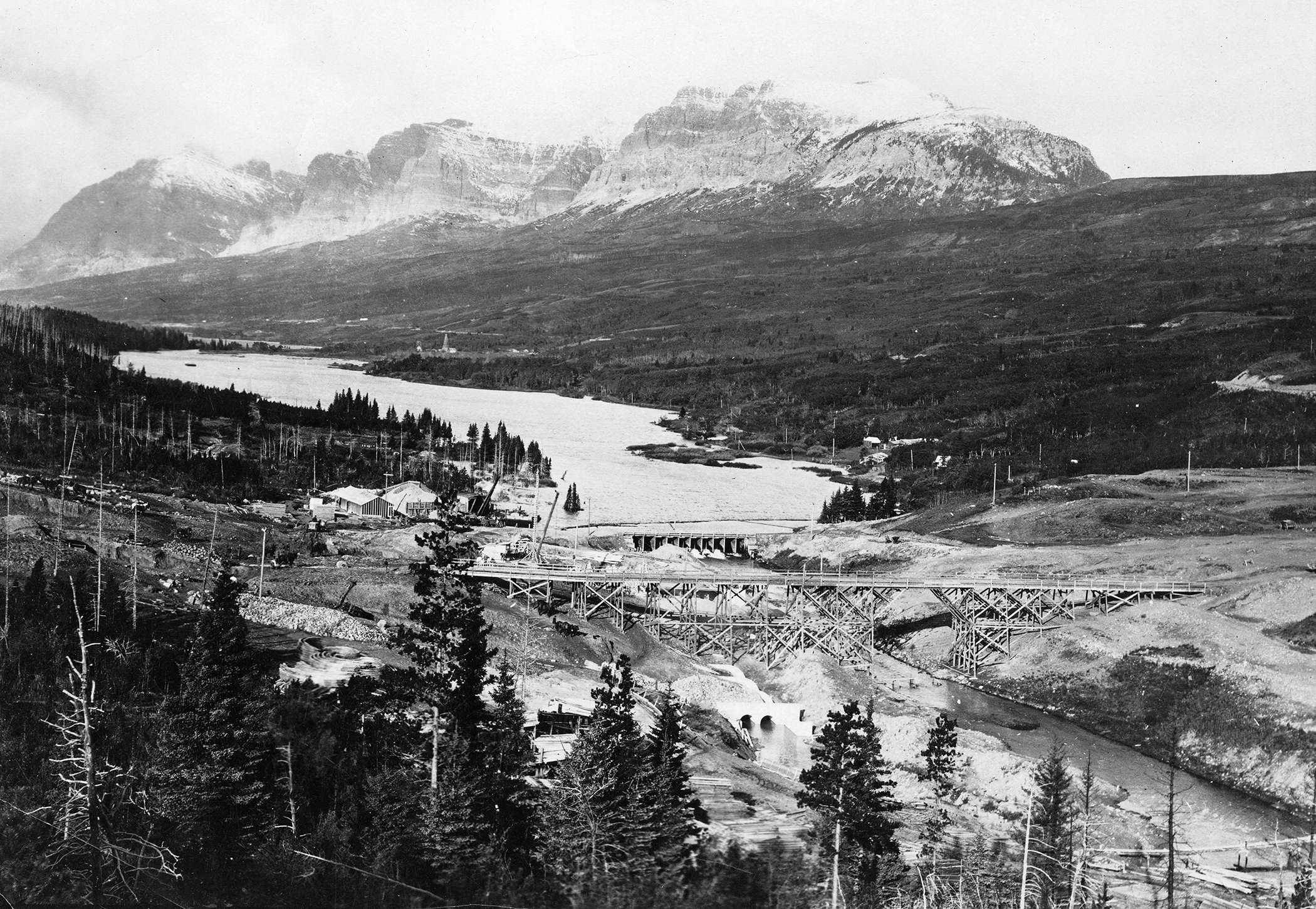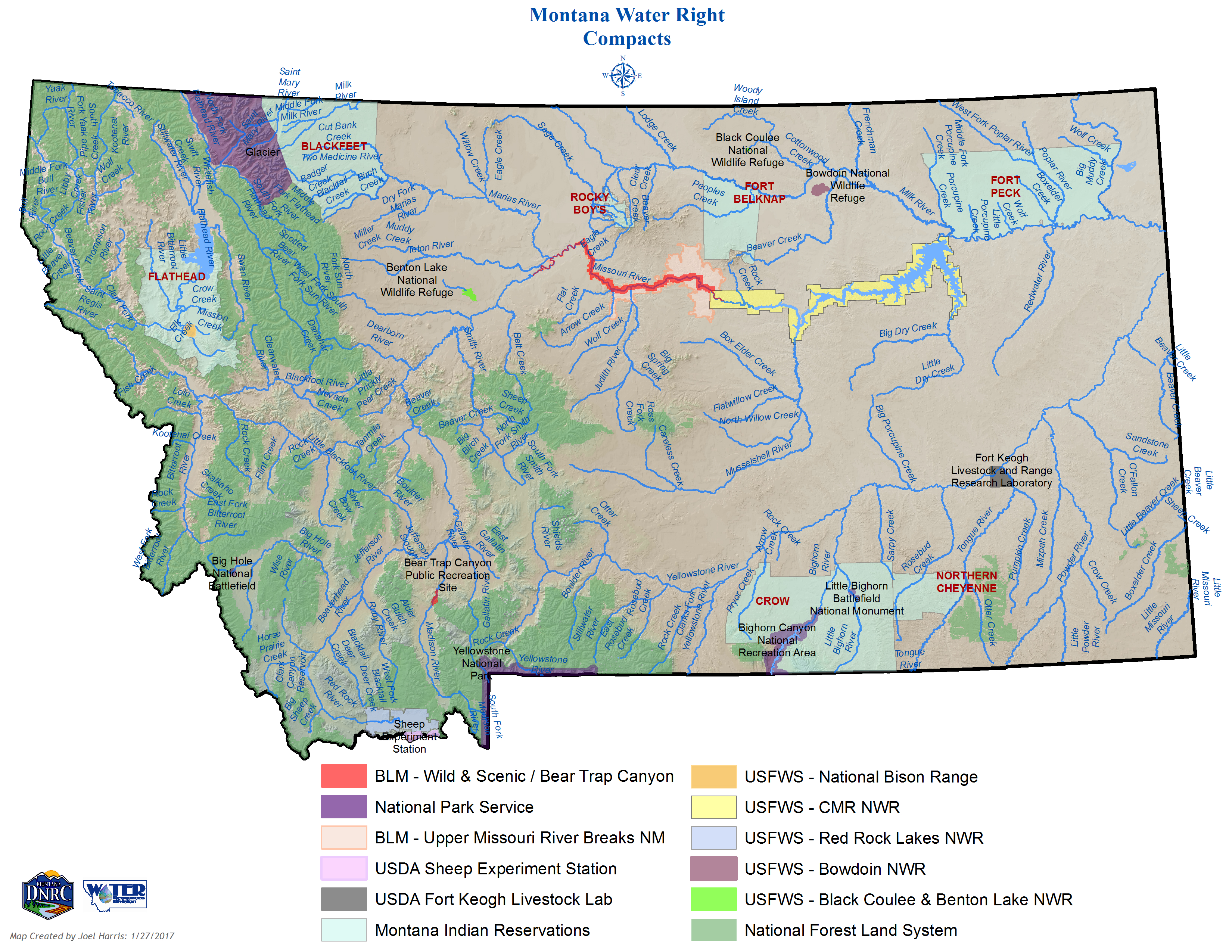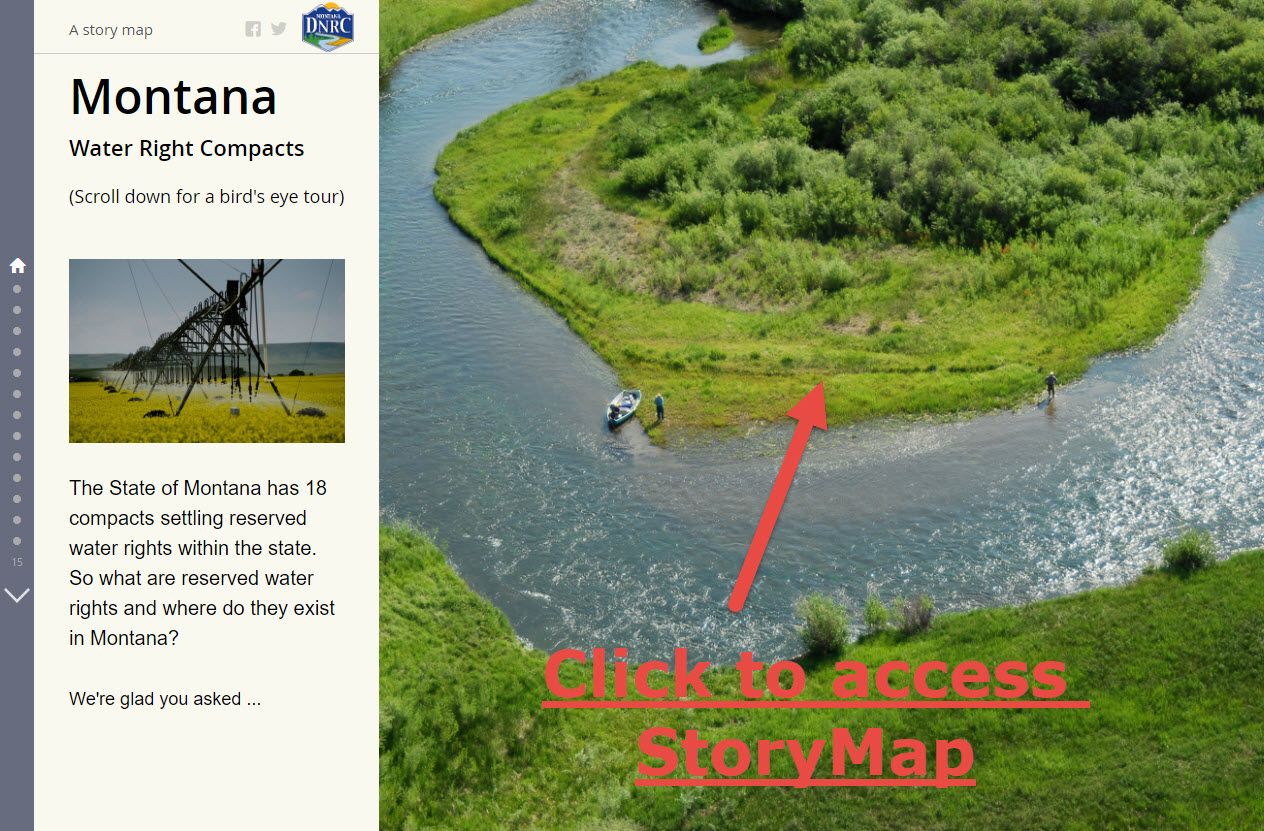What We Do
DNRC staff attend to the State's obligations under 18 distinct water right compacts negotiated by the Reserved Water Right Compact Commission, a body authorized to negotiate on behalf of the Governor for settlement of Federal Reserved Water Right Claims on Indian Reservations and federal reserved lands. DNRC's Compact staff implements the compacts through a wide range of legal, technical, and administrative implementation duties. The State's compact obligations are described throughout MCA 85-20 and are also found within executive agreements between Compact Parties. Frequent implementation duties include: providing statutorily required quarterly and annual reports, participation on technical teams, water right and water management assistance to state-based water users and compact parties and administering the disbursement of State settlement funds. In addition, compact implementation work frequently requires resolving unanticipated technical and administrative issues related to large compact infrastructure developments and changed circumstances.
Are you looking for our CSKT-MT Compact page? Click here. For the Flathead Reservation Water Management Board (FRWMB) page, click here. For a shortcut to the FRWMB forms page, click here.
Frequently Asked Compact Questions

Montana's 18 Water Right Compacts
Federal Compacts
- BLM Upper Missouri River Breaks National Monument Compact 85-20-1801 MCA
- BLM Bear Trap Canyon / Upper Missouri Wild and Scenic River Compact 85-20-501 MCA
- National Park Service Compact 85-20-401 MCA
- USFWS Benton Lake and Black Coulee Compact 85-20-701 MCA
- USFWS Bowdoin National Wildlife Refuge Compact 85-20-1301 MCA
- USFWS Charles M. Russell National Wildlife Refuge Compact 85-20-1701 MCA
- USFWS National Bison Range Compact 85-20-1601 MCA
- USFWS Red Rock Lakes National Wildlife Refuge (NWR) Compact 85-20-801 MCA
Tribal Compacts
- Assiniboine and Sioux Tribes of the Fort Peck Indian Reservation Compact 85-20-201 MCA
- Blackfeet Tribe Compact 85-20-1501 MCA
- Chippewa Cree Tribe of the Rocky Boy’s Indian Reservation Compact 85-20-601 MCA
- Confederated Salish and Kootenai Tribes of the Flathead Indian Reservation Compact 85-20-1901 MCA
- Crow Indian Reservation Compact 85-20-901 MCA
- Gros Ventre and Assiniboine Tribes of the Fort Belknap Indian Reservation Compact 85-20-1001 MCA
- Northern Cheyenne Tribe Compact 85-20-301 MCA
Reserved Water Rights Compact Commission History
|
(Construction of Sherburne Dam, just outside Glacier National Park, ca. 1920. Photo courtesy Montana Historical Society. National Park Service-MT Compact, MCA 85-20-401, quantifies the reserved water rights for Glacier National Park and other reserves.) |
The 1979 Montana Legislature established the Reserved Water Rights Compact Commission (RWRCC) as part of the state-wide general stream adjudication.The RWRCC’s mission was to negotiate settlements with Montana Indian Reservations (7) and federal agencies (11) claiming federal reserved water rights within Montana.
Recognizing many federal reserves have very senior priority dates, in negotiations, the RWRCC through various methods focused on protecting water rights under state law to the maximum extent possible. Over decades of negotiations between 1979 and 2015, the Commission negotiated and saw the approval of 18 water right compacts by the Montana Legislature. Currently, with negotiations concluded, the Commission is not active and many commissioner terms have expired and have not been re-appointed. The DNRC Compact Implementation Program is tasked with implementing the State's commitments under these compacts.
|



